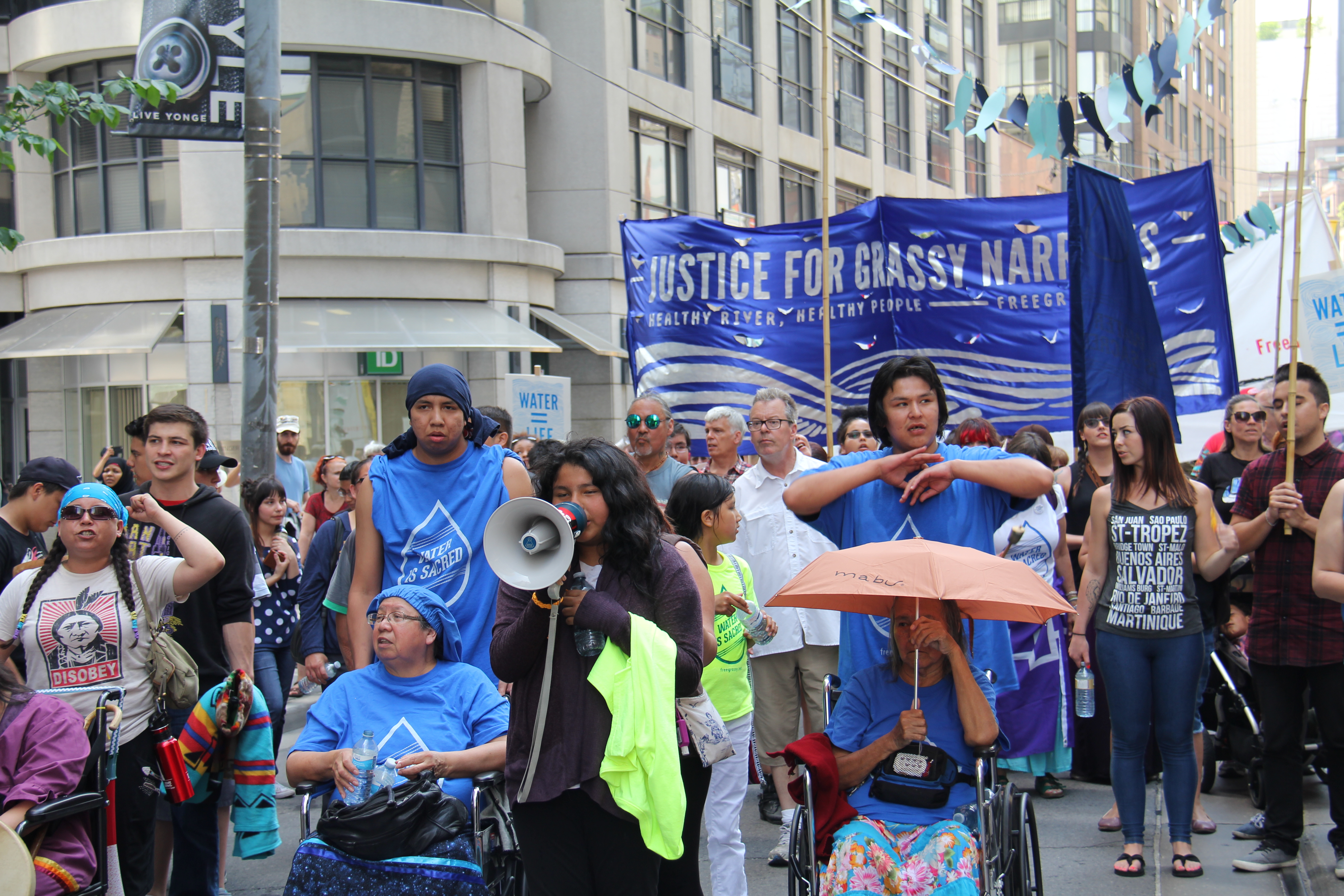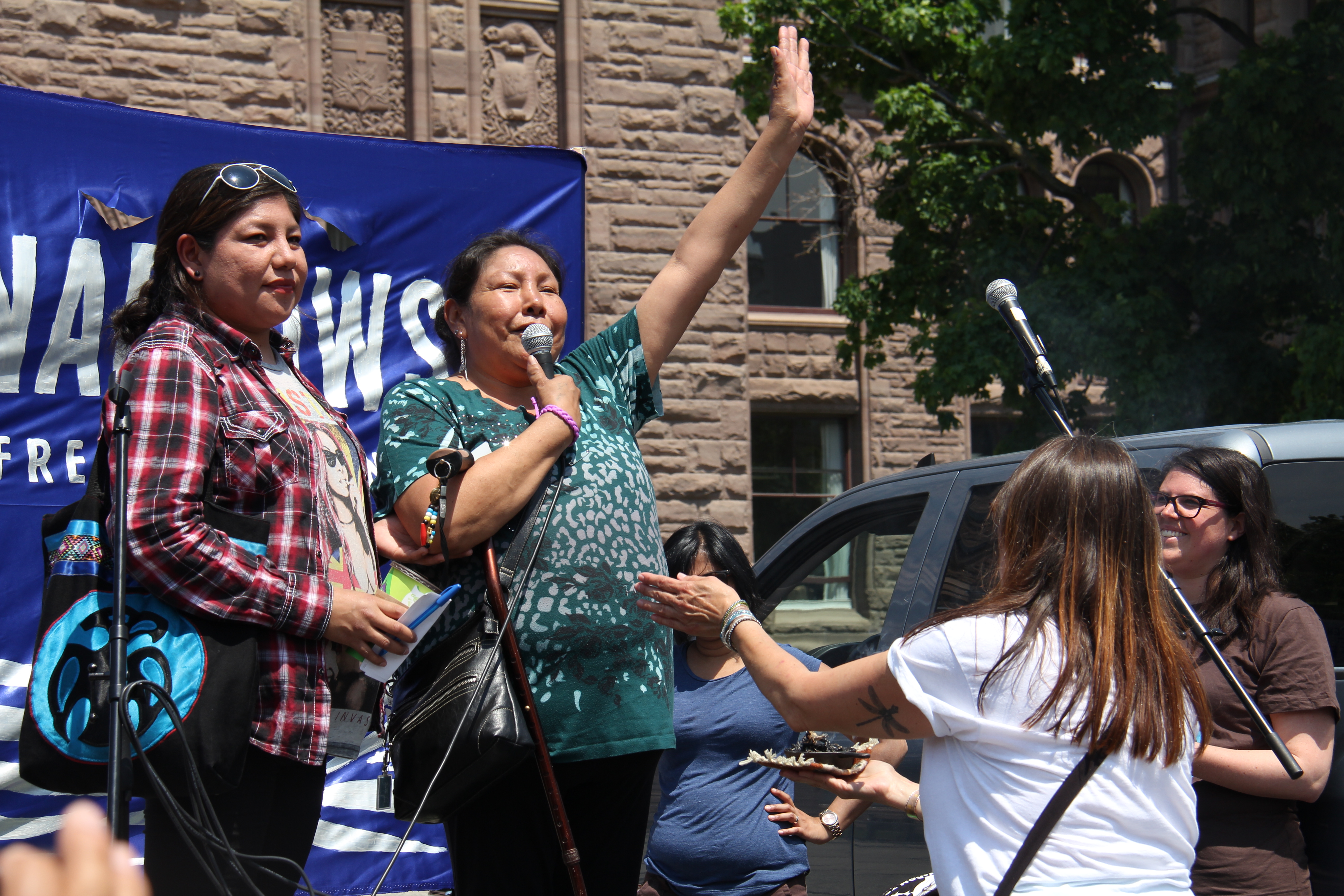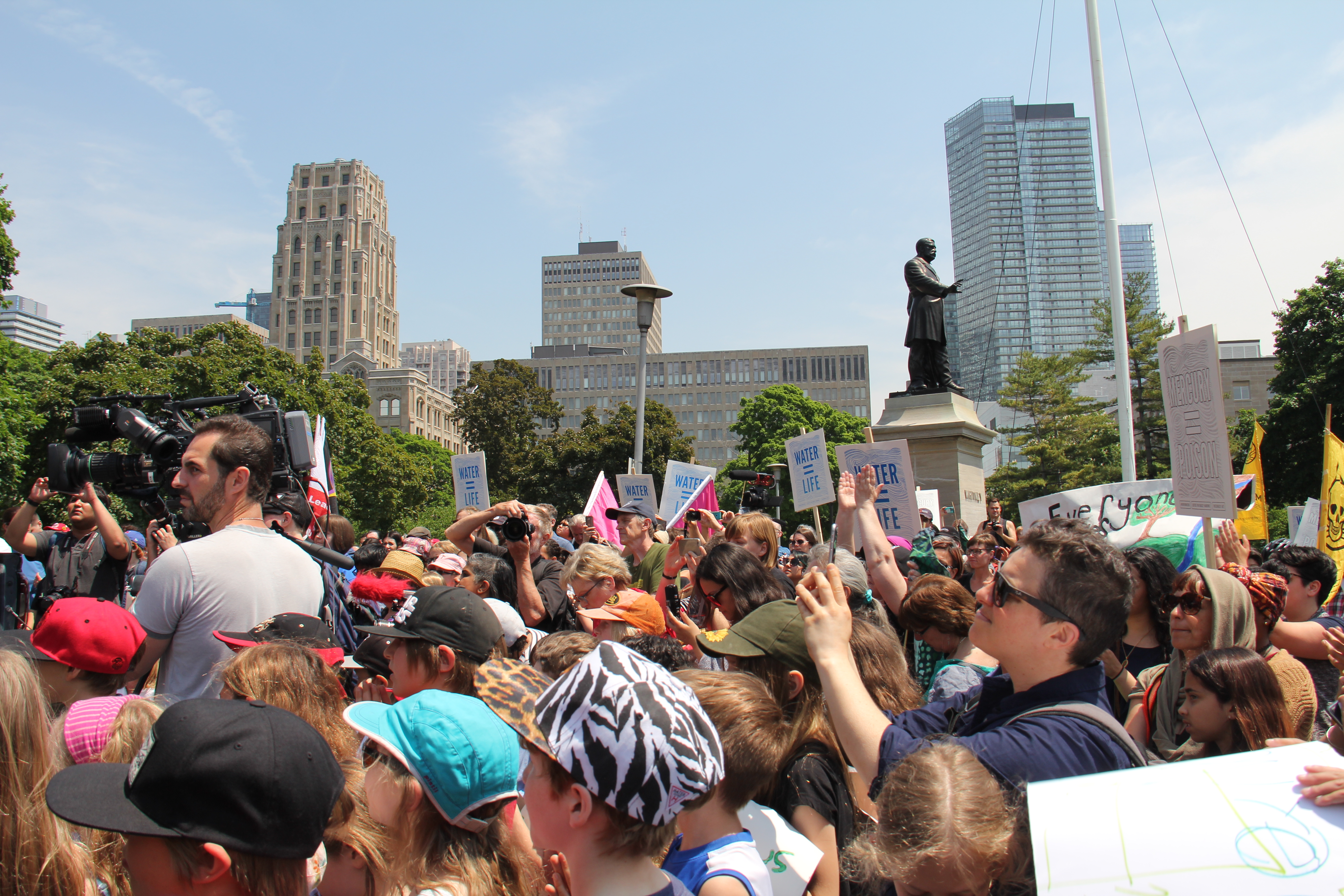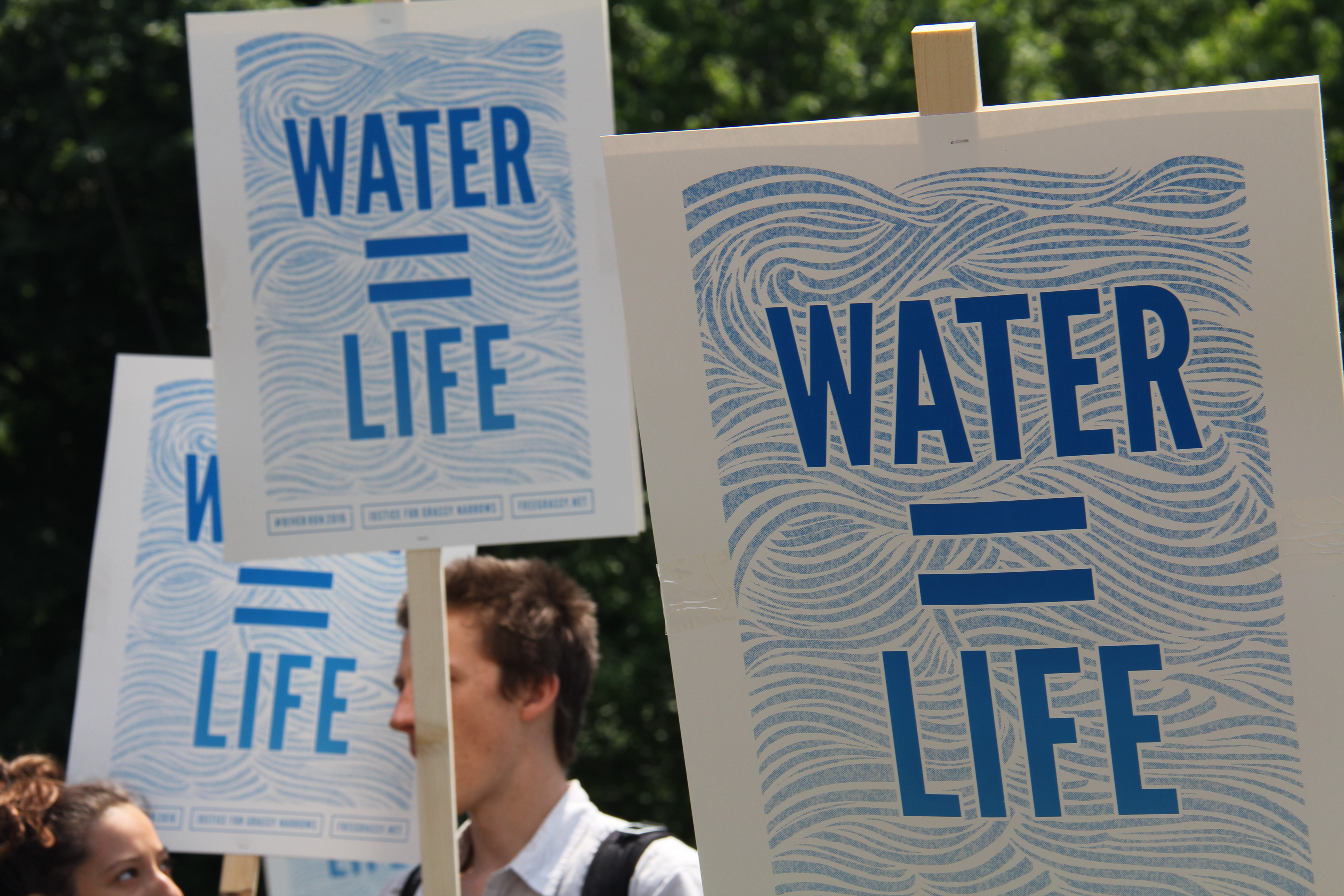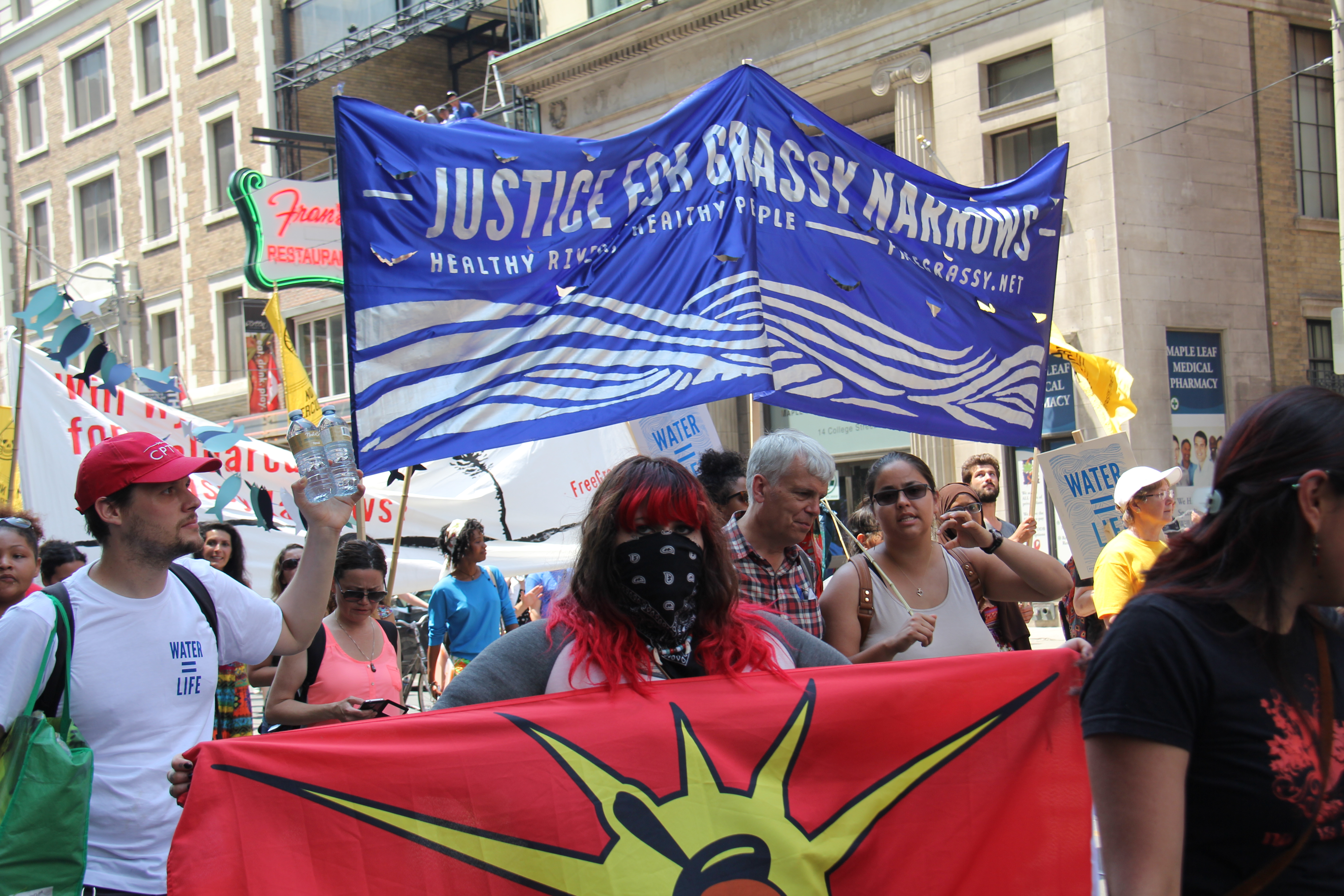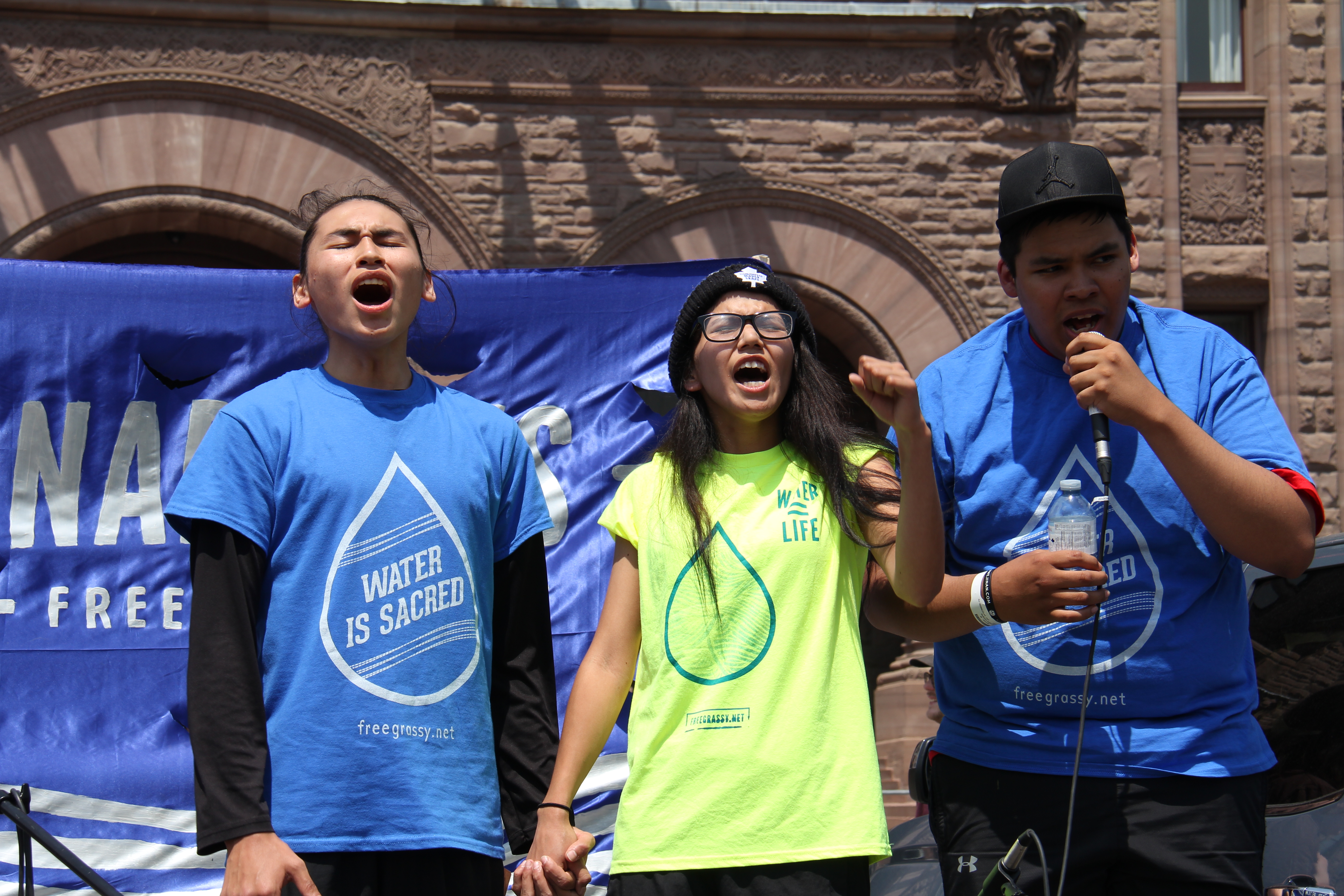Like this article? rabble is reader-supported journalism. Chip in to keep stories like these coming.
Youth from the Grassy Narrows First Nation led a throng of supporters from Queen’s Park to Allen Gardens in the fourth River Run since 2010.
People of Grassy Narrows, an Ojibwa First Nation from Treaty Three territory, say its time for action, placing the onus heavily on Ontario Premier Kathleen Wynne to act on the recommendations put forth in a scientific study released days before the rally held Thursday.
“Today we walk away from Parliament,” said Judy Da Silva, a mother, grandmother, and activist leader, standing before Queen’s Park in Toronto on Thursday.
“We’ve always walked towards it to seek answers to our mercury pollution that’s in our river. But today we walk away because we feel like enough is enough.”
The sentiment was widely echoed.
Chief Simon Fobister Sr. addressed what organizers estimated to be a crowd of more than 1,000 people, saying: “No more fancy words. No more studies. We know the mercury is there. We’ve lived it. We’ve lost our economy as a result. We’ve lost our health as a result.
“Today we want action. We just want the premier to say ‘I’m going to clean this river!'”
The group marched 2 kilometres, holding cascading reams of blue fabric and fish cutouts, cheering: “Free the river,” and the call and response, “What do we want?: Justice for Grassy! When do we want it? Now!”
The new report, led by researcher John Rudd, addresses proven solutions for the mercury contamination that has poisoned the Wabigoon River for nearly 60 years since the Ontario government sanctioned the disposal of 9,000 kilograms of mercury by a Dryden pulp mill.
The potentially fatal neurotoxin can cause headaches, numbness in the extremities, and Minamata disease, a degenerative illness studied by Japanese scientists and named for the city in which it was found after a chemical factory discarded industrial waste in 1956.
Faisal Moola of the David Suzuki Foundation and professor of forestry at the University of Toronto told community members and supporters that, “the river and the chain of lakes through which it runs provided fish, drinking water, and near complete employment for members of the community.”
But the noxious concentration of mercury in the waterways have decimated both industry and health.
“I’ve seen what its done to the community,” said Francis Kavanaugh, Grand Chief of Treaty Three.
“At one time that used to be their livelihood: fishing. Now they can’t even eat it.”
Community members and elders called on their supporters to demand action from the government.
“You elect them to this building here,” said Fobister of Queens Park. “Pick up the phone, call them and tell them we want action!”
Among the teens that travelled the 1,700 kilometres to advocate for decontaminating their river and perform their N’we Jinan co-produced song, “Home To Me,” was Sharice Bruce.
“We’re finally taking a stand. I don’t understand why they don’t want to help,” she said.
“There is evidence that we can clean the water, but the premier said that there’s no evidence. But we all know the water can get cleaned up.
“When we voted for the Liberals, we wanted change. Where is that change?”
Da Silva said that if the provincial government doesn’t address the issue, “the next step we want to go is Justin Trudeau.”
“We’ve been dealing with our provincial government all this time, and all the time its always just damage control for them.”
Steph Wechsler is a freelance writer and master’s candidate at the Ryerson School of Journalism.
Photos: Steph Wechsler

